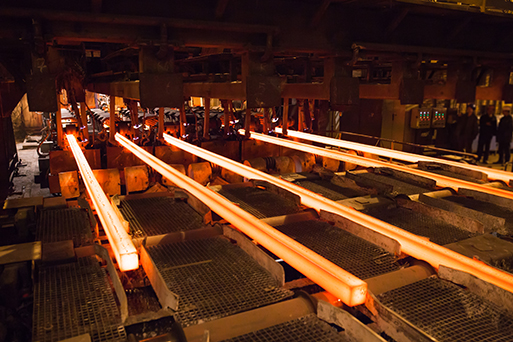Metal Casting
Forming Components & Protective Coatings
Boron nitride’s high chemical resistance against a vast majority of molten metals, combined with excellent thermal shock resistance makes it ideal for a variety of molten metal contact applications. In addition, boron nitride is easily machinable into complex shapes for quick prototyping, offering advantage over traditional ceramics.
Protective Coatings for Molten Metal Contact
Utilization of a Saint-Gobain boron nitride protective coating on refractory surface in contact with non-ferrous molten metals such as aluminum, copper or zinc dramatically extends the life of the refractory system and the efficiency of the metal processing line. Saint-Gobain CeraGlide® SF+ coatings, with an alumina binder system, provide a high-grade protection layer that has strong adhesion, wear resistance and is non-wetted by molten metals in demanding environments.

Break Rings for Continuous Casting
Over the past 15 years, horizontal continuous casting of steel and specialty alloys has gained widespread acceptance compared to traditional vertical continuous casting, due to favorable investment cost, small plant footprint, possible high level of automation, and low manpower requirements. Furthermore, possibility of smaller batch sizes offers manufacturers flexibility in offering a wider product range.

Saint-Gobain's COMBAT® grade ZSBN offers the properties critical to this application - high thermal shock resistance for uninterrupted flow of melt, low coefficient of friction even at high temperatures for build-up free movement, and corrosion and slag resistance for a variety of metals, alloys and super alloys.
Side Dams for Thin Strip Casting
Thin strip casting of steel and its alloys at or near its final dimensions has gained popularity due to energy savings offered by reduced number of manufacturing steps, as well as reduced carbon footprint compared to traditional slab-casting.

Saint-Gobain's COMBAT® grade ZSBN offers the right balance in this application. Addition of zirconia to boron nitride adds the desired wear resistance and high corrosion resistance at operating temperatures upwards of 1400°C.
Hot pressed hBN solids & composites available as blanks or custom finished shapes

